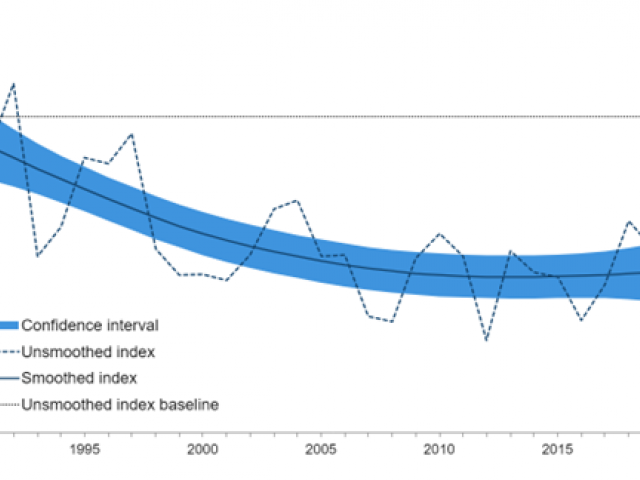This is National Tree week, do we need more trees?
Every year National Tree Week is an opportunity to celebrate trees and woods in the UK and heralds the start of the tree planting season. So more trees would be good, no? Well, yes, but!
Butterflies and moths are essential components of woodland ecosystems, whether the system is one characterised by crowds of trees in a woodland or sentinel trees in the open landscape. Butterfly Conservation has been collecting data on species for the last forty years and woodland butterflies have been one of the biodiversity indicators used by the Government to monitor change. The results are not good.

Unfortunately, the policy solutions are not easy, just planting more trees is not going to replace the ecosystems we have lost.
Trees are amazing plants, not least the fact that some species can live for thousands of years, a lifespan that can be difficult to comprehend as a human. It should be no surprise then that woodland ecosystems can have been around for thousands of years, in some instances perhaps continuously since the beginning of the Holocene nearly 12,000 years ago. Woodland ecosystems are thus a complex coagulation of myriad different species, tangled ecological associations, and constant dynamic change.
Pollen records tell us that we can see this in the post-glacial history of the UK, our countryside has been a welcome space for trees and woodlands. And yet, we are now in a position where the UK is one of the least wooded countries in Europe – according to the State of the UK’s Woods and Trees 2021 woodland covers 13.2% (3.2 million ha) of the UK’s land surface.
All four Governments have set tree planting targets, but mainly as a response to carbon storage commitments as a way of mitigating carbon emissions. Carbon sequestration of trees is complex, affected by the species, the underlying soil (up to 50% of the carbon stored is in the soil, rather than the tree), and the management of the habitat but it remains a key action to tackle climate change.
But trees are much more important than just their potential to store carbon; they provide shade from heat in the summer and shelter from the storms of winter, they intercept rainfall and increase infiltration of water into the soil, and filter particulates and air pollution. And most importantly, they provide a variety of resources for wildlife including food, shelter, and breeding sites.
And so we come back to our original question - do we need more trees? Well, yes, but! The wrong species in the wrong habitat can damage existing wildlife, decrease carbon storage (think trees on peat which dry out the peat and reduce the existing high capacity for carbon storage) or damage water and air flows with knock-on consequences for flooding or pollution. To avoid a continuation of the deleterious effects of bad but often well-intentioned tree-planting schemes in recent years we (used to) talk a lot about “right tree in the right place” and that still underpins decision-making. But the right tree is probably determined by your starting views.
As we look to the future, and the potential to enable a recovery of nature, many policy discussions are looking to frame land management decisions within the context of “nature-based solutions”.
Nature-based solutions (NbS) involve working with nature to address societal challenges, providing benefits for both human well-being and biodiversity. Specifically, they are actions that involve the protection, restoration or management of natural and semi-natural ecosystems. They are actions that are underpinned by biodiversity and are designed and implemented with the full engagement and consent of local communities.
Following a nature-based solution framework might give you the same result as looking at “the right tree in the right place”, but the process will be more transparent. You are more likely to consider natural regeneration rather than tree planting, assess the role of trees across a broader range of wildlife and community benefits and impacts, and community involvement is automatically built in.
Butterfly Conservation will be advocating to all UK countries that nature-based solutions become the principal framework for land use decision making including where we need more trees and woodland.


